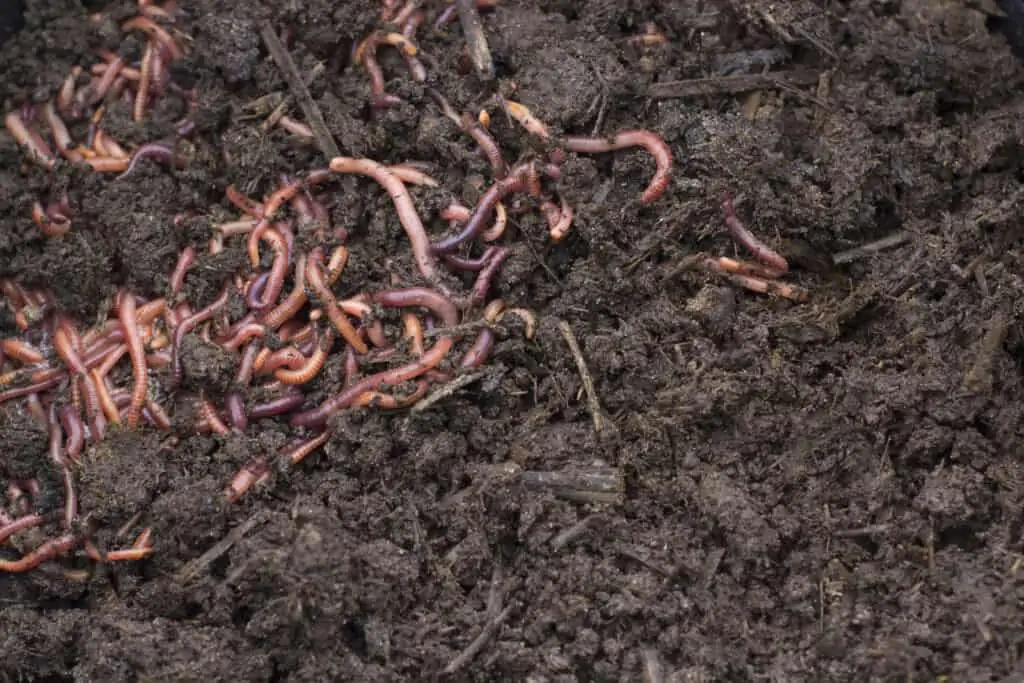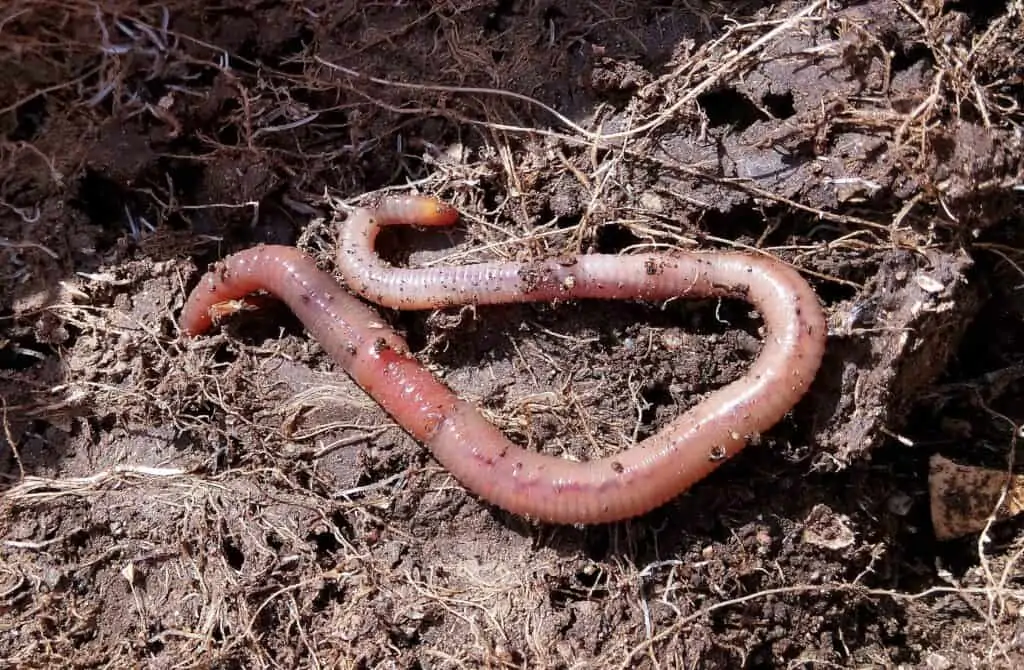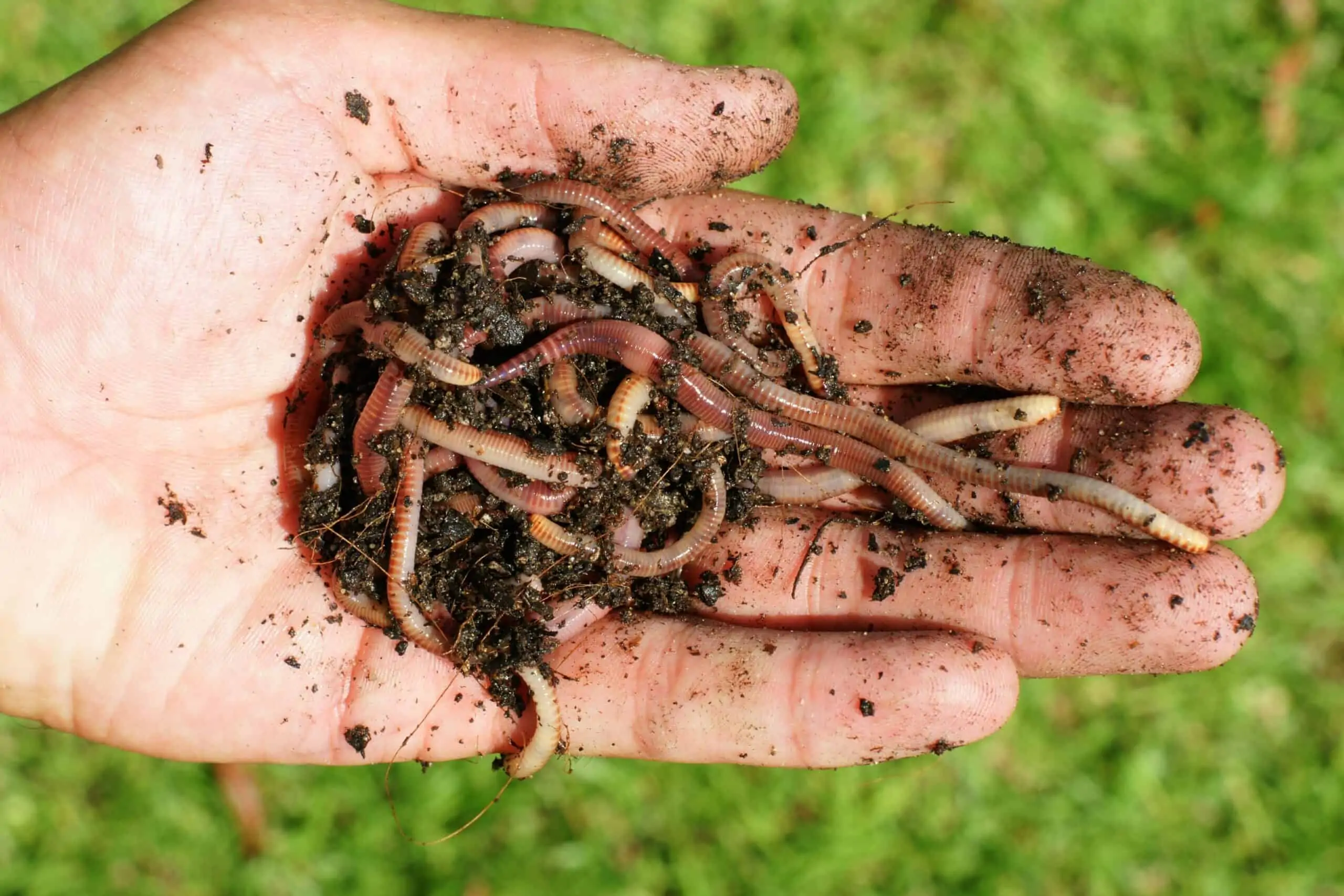As an Amazon Associate I earn from qualifying purchases.
The red wriggler worm is a composting wonder, and you can typically find them in your pile of well-rotted manure (especially if you put them there). Red wrigglers are also one of the most common types of worms found in vermicomposting bins. You might have even seen them wiggling around on top of moist soil or under logs, but how well do they reproduce in your compost?
Red wrigglers breed prolifically, which makes them a popular choice for processing compost the worms of choice in worm farms. Adult red wiggler worms can produce 2 to 3 cocoons each week, each hatching 2 to 6 juvenile worms! This breeding cycle will grow your worm population rapidly.
Red wriggler worms are experts in processing organic material and turning it into nutrient-rich compost. But if you only start out with a handful of these worms n your compost pile, how quickly will they reproduce to boost the population and increase the rate at which they process the compost?
What Are Red Wriggler Worms And What Do They Eat?

The red wriggler worm is a species of earthworm that is native to Europe but has been introduced to the majority of countries around the world. Their introduction to other countries was for their superior organic material processing capabilities in comparison to some local species.
Their scientific name is Eisenia fetida, but they are known by many names internationally, including manure worm, trout worm, redworm, panfish worm, brandling worm, tiger worm, and of course, the red wiggler worm.
The red wriggler worms differ from other earthworm species in that they are seldom found beneath the soil but mostly in the layer of organic material on top of the soil. This is because this is the main food source for these worms.
They have developed into efficient processors of organic material and quickly break it down through their digestive process into valuable compost.
As a result of their efficiency in this regard, they are used in both domestic and commercial applications for the processing of organic waste material.
How Fast Do Red Wrigglers Reproduce In Compost
Red wrigglers are prolific breeders, and if the conditions are right, your worm population can grow significantly in the space of two or 3 weeks.

Red wrigglers are hermaphroditic creatures which means that an individual worm has both male and female sex organs. While it is possible for a single worm to produce offspring on its own, this is unusual, and a worm would normally reproduce by swapping sperm with another worm.
Once mating has occurred, each worm will lay or secrete a cocoon that contains several tiny eggs inside the cocoon. The cocoons are shaped similar to a lemon, and when they are first produced, they appear yellow in color.
As the baby worms inside the eggs begin to mature, the cocoon changes to a brown color. The cocoons are large enough to be visible to the naked eye, but the eggs inside are substantially smaller. Red wrigglers are considered an adult and of breeding age, once they reach 60 days of age.
How To Encourage Your Red Wrigglers To Breed
While playing Barry White music and a candlelit dinner may work for your human spouse, this tactic will not necessarily encourage your worms to make babies!
There are, however, some measures that you can take to provide an environment within your compost pile that will get your worms in the mood and encourage them to build your worm population.
There are certain organic materials that seem to encourage their breeding and certain bedding materials that encourage copulation between the worms. Combining these ingredients with the right temperature will encourage breeding among your worms and boost colony size.
The following foods are the equivalent to the candlelit dinner for your worms and are sure to encourage some breeding action.
- Watermelon rinds
- Cantaloupe rinds with chunks of the flesh
- Pumpkin skins and seeds
- Mango skins. Who doesn’t enjoy tropical island-style fruit?
- Over-ripe bananas. The soft, delicate flesh seems to draw the worms out to congregate!
- Avocado skins
- Corn cobs
While these foods definitely work to get your worms to congregate, feed and reproduce, what works even better, is if you take a few of these ingredients and chop them up into smaller chunks to increase the surface area so that more worms can feed in a smaller area.
This does not have to be difficult. A blender can make quick work of chopping up the ingredients into smaller chunks for the worms to enjoy.
Once the worms have reproduced and the cocoons have been secreted, a temperature of 77F or 25 Celsius will encourage the baby worms in the eggs in the cocoons to develop at the optimum rate and hatch out within the space of about 3 weeks.
Considering that an adult red wriggler worm can produce 2 or 3 of these cocoons a week, and each cocoon can house between 10 to 20 eggs, but only between 2 to 6 baby worms will emerge from the cocoon. This means that the population of the worms in your compost can easily increase to double their quantity in the space of a few weeks.
Of course, this is if the conditions are optimal in the compost pile to encourage breeding and survival of the cocoons and eggs. Fortunately, the decomposing compost helps to increase the temperature within the compost pile, so maintaining the ideal 77F is a natural effect of the heat that results from the decaying organic material.
Give Your Worms The Right Bedding
The red wrigglers do not sleep where they eat. They usually move between a sleeping area and migrate back to the feeding area during the day.
The worms seem to reproduce better and more successfully if they are given certain types of betting material within the compost.
Strangely enough, the bedding material that seems to be conducive to their breeding is paper and cardboard. There is not much knowledge about why they seem to prefer this material over other materials, but your will notice in your compost pile that they like to lay their cocoons on this type of organic waste rather than other types.
There is some thought that the additional carbon value in these materials may be attracting this behavior, or the slightly rougher material allows for easier adhesion of the cocoons to the surface. For whatever reason, the paper and cardboard bedding seems to encourage breeding and egg production within the compost pile.
Providing layers of this type of bedding material in your compost pile will create locations where the worms will gravitate towards as a place to spend the night, breed, and also lay their cocoons.
Considering that an adult red wriggler can live anywhere from 1 to 5-years, you can see that your worm population can easily grow to where your worms will be breaking down your organic waste at a rapid rate and producing beautiful compost for your garden.
Other Ways To Encourage Your Red Wrigglers To Breed
The red wrigglers in your compost pile will not continue to reproduce if they detect that their food supply is running out or that the space is becoming overcrowded with worms.
If you want to keep your worm population healthy and strong, you need to make sure that they have enough food in the compost pile to keep them well-fed and reproducing.
You also need to make your compost pile large enough so that they are not going to run out of space in a short amount of time, but not so large that the adult worms won’t be able to locate each other to breed.
The ideal worm density, if you are starting off a compost pile, is half a pound of worms for every square foot of compost (which differs from the number of worms you need for your garden). This will provide a sufficient density of worms in the pile to kick-start the interaction and breeding to rapidly boost the population of the worms in your compost pile.
If you are finding that the worms are becoming too densely populated in one compost pile, remove some of the worms and start a second compost pile to more evenly distribute the worm population.
Conclusion
Red wrigglers are not only one of the best species of earthworm for your compost pile because of their awesome organic material processing capabilities but also for their prolific breeding tendencies.
If you are starting up a new compost pile, you only need a handful of worms to add you the new pile, and in the space of 3 or 4 weeks, the population will easily have more than doubled, as long as the conditions in the compost pile are conducive to their breeding and hatching.
Other Articles You’ll Enjoy
Can You Compost Oats? (A Guide to Oatmeal and Oat Products)
At A GlanceYes, you can compost oats and oatmeal as they are organic materials that…
Can You Compost Oil? (Yes, but only a little…)
At A GlanceIt’s not recommended to compost oil as it can cause several issues in…
Composting Nectarine Pits – What You Need to Know
At A GlanceComposting nectarine pits can be a bit challenging due to their hard and…
Composting Newspaper with Color Ink – What You Need to Know
At A GlanceYes, you can compost newspaper with color ink, but it’s preferable if the…
Can You Compost Noodles? A Starchy Foods Composting Guide
At A GlanceYes, you can compost noodles as they are a biodegradable organic matter. Whether…
Can You Compost Nut Shells? (Yes…but probably don’t…)
At A GlanceYes, you can compost nut shells, but there are certain considerations to be…

